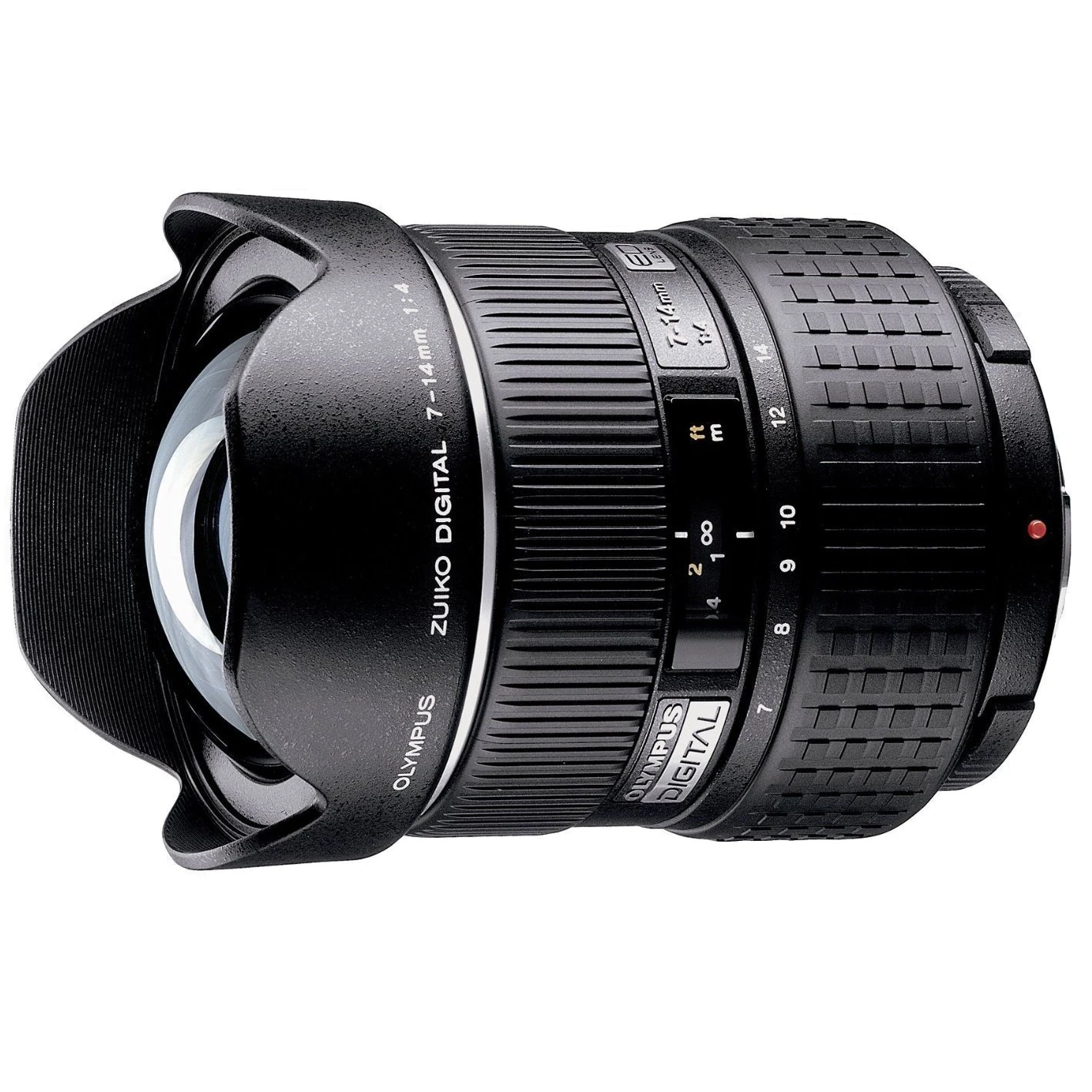Olympus ZUIKO DIGITAL ED 7-14 mm 1:4.0 Lens
Price History & Forecast
No Price Data Available
Price history will appear here once data is collected from Amazon.
Price Distribution
No price data available for histogram
Take Action
Product Description
Manufacturer's Description Top Pro Lenses:The Top Pro lenses are designed for highest professional requirements. Big maximum apertures over the whole zoom range as well as dust & splash proof construction distinguish these lenses. They all contain ED glass elements for best edge-to-edge image quality. They are specially marked with a platinum ring round the front lens. ZUIKO DIGITAL Lenses:ZUIKO DIGITAL lenses meet the high demands of digital SLR photography providing edge-to-edge sharpness and high light utilisation. They feature near telecentric optics for high image quality. Based on the Four Thirds standard they feature bright, compact and lightweight design. Four Thirds Standard:Four Thirds is the answer to the uncompromising demands of professional photography. It represents a break from the past and frees digital SLR photography from the confines of conventional camera technology. Angle of View:When you use the lenses designed for 35mm film with digital camera bodies that incorporate sensors smaller than film there is the potential problem of a loss of wide-angle capability. When you use lenses designed for 35mm film with digital camera bodies that incorporate sensors smaller than film there is the potential problem of a loss of wide-angle capability. Four Thirds solves this phenomenon. As the lens if always fully optimised to suit the sensor, you don't have to contend with expensive wide-angle lenses that do not attain their intended specification - the angle of view you expect is the angle of view you get. The standard focal lens of the Four Thirds standard is around 25mm.So to compare for the 35mm format with a standard focal length of around 50mm, you have to use the factor 2 to have the angle of view compared (50mm = 100mm related to 35mm equivalent focal length). Lens Resolution & Corner-shading:Because the medium of film is very tolerant, there was no need to equip lenses with very high resolving power in the past. But with digital sensors, this has changed. Conventional lens systems simply do not deliver the lens resolution necessary for electronic sensors.They often have a resolution of only around 10 microns. However, because modern multi-megapixel cameras often have a pixel pitch of just 5 or 6 microns or less, overlapping and quality losses are the result. Therefore, the full theoretical performance of the sensor cannot be used. The problem is exacerbated with a greater number of pixels and a smaller sensor size. All lenses designed for the Four Thirds standard ensure the image sensor is not left wanting. The ultra-fine resolution attained through special manufacturing processes guarantees full sensor performance. For Edge to Edge Clarity:All Four Thirds-optimised lenses feature so-called near telecentric optics. Due to the nature of the electronic sensor construction, image data is lost and there is a susceptibility to interference if light hits the pixels at a high angle of incidence. IT causes a situation called corner-shading, a loss in quality at the edge of the frame. This is associated particularly with cameras using full-format sensors, where lenses must spread the light widely to reach each corner. However, the near telecentric construction of lenses optimised for the Four Thirds standard ensures light hits the sensor at right-angles. This guarantees edge-to-edge colour, clarity and brightness. Standardisation:Four Thirds is a technological standard dedicated to the needs of digital SLR camera systems. It has been designed to maximise the performance of both image sensors and lenses. To achieve this, it sets definitive standards on three levels:Mechanical, Optical and Communication. Mechanical Standards:The type, size and shape of the bayonet mount and mount bore are standardised to permit lens inter-changeability. Also the distance between the focal plane and the lens flange surface (flange back) and the position of the image sensor in relation to the rear of the lens have been defined. Optical Standards: The Four Thirds Standard fixes the size of the image circle, i.e. the diameter of the circle projected by the lens onto the focal plane. The lens mount is roughly twice as big as the image circle, a feature necessary to allow the light to fall at almost perpendicular angles onto the entire image sensor via the near telecentric lens elements, thus virtually eliminating corner-shading. A Communication Standard:The lens and body are no longer separate entities. now, through the standardised communications protocol established by Four Thirds, the two can communicate and exchange information. An Open Standard:The Four Thirds standard has been deliberately designed as an open stnadard.That means the more body, lens and accessory manufacturers adopt the standard, the greater will be the degree of product compatibility. As a result, the range of equipment and options available to photographers will be greater General Advantages of the Four Thirds System:No decrease in image resolution
Key Features
Extreme wide angle lens with 2x zoom
Super ED & ED element for minimum chromatic aberation
Splash-proof Pro lens
Product Details
- Brand
- OM SYSTEM
- Model
- 261009
- Colour
- Black
- Size
- 7-14 Mm
- Format
- Electronics
- ASIN
- B0007WDH3I
- Domain
- Amazon UK
- Release Date
- 06 November 2008
- Listed Since
- 08 June 2007
